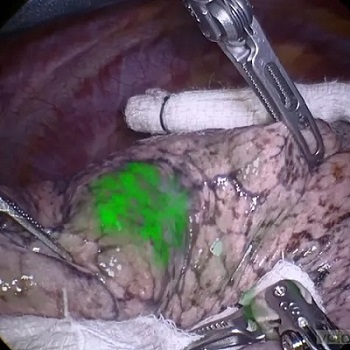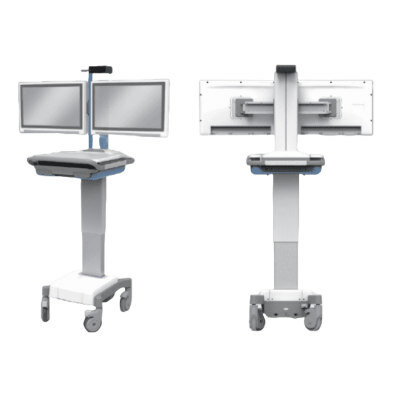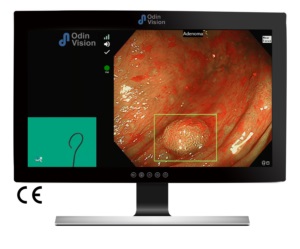Novel Fluorescent Imaging Agent Helps Surgeons Visualize Missed Lung Tumors
Posted on 24 Jul 2024
Surgery remains the primary treatment for most solid tumors, but conventional open surgery often results in significant trauma and high costs. Minimally invasive (MIS) and robotic-assisted surgical techniques have become increasingly popular as they reduce tissue damage, pain, blood loss, duration of hospital stays, and postoperative complications. Despite these advantages, these advanced surgical methods can sometimes leave behind tumor tissue, which is linked to poorer patient outcomes, including reduced survival rates. Now, a new study has shown that a novel tumor-targeted fluorescent imaging agent enables surgeons to better see and remove tumor tissues that are typically missed using standard surgical approaches.
Vergent Bioscience’s (Minneapolis, MN, USA) VGT-309 is an innovative tumor-targeted fluorescent imaging agent intended to enhance tumor visibility during open, MIS, and robotic-assisted surgeries. Administered through a brief intravenous infusion a few hours before surgery, VGT-309 tightly binds to cathepsins—proteases overexpressed in many solid tumors. This binding property potentially offers significant clinical benefits, making VGT-309 an optimal imaging agent for tumor detection. VGT-309 incorporates the near infrared (NIR) dye indocyanine green (ICG), which is compatible with all current NIR intraoperative imaging systems designed for MIS. ICG is favored for its ability to minimize background autofluorescence that can interfere with imaging clarity.

Now, data published in The Annals of Thoracic Surgery further validate the clinical utility of VGT-309, demonstrating its capability to reveal difficult-to-find and previously undetected tumors in lung surgeries. In a Phase 2 efficacy study involving 40 patients with suspected or confirmed lung cancer eligible for surgery, researchers assessed whether IMI with VGT-309 could enhance surgical outcomes. The study's primary efficacy endpoint was the rate of patients experiencing at least one clinically significant event, defined as the detection of lesions overlooked by standard techniques, the discovery of synchronous and occult cancers, and the identification of inadequate surgical margins.
Patients received VGT-309 preoperatively via intravenous infusion. After attempting to locate the lesion using standard techniques, surgeons employed a commercially available NIR endoscope to visualize the lesion, which was then evaluated by pathology. Out of the 40 participants treated with VGT-309, 17 (42.5%) experienced at least one clinically significant event during their surgery. The use of VGT-309 with NIR fluorescence imaging enabled intraoperative visualization of various primary and metastatic tumors, including adenocarcinoma in situ, invasive adenocarcinoma, lymphoma, colorectal cancer, neuroendocrine tumors, sarcomas, and squamous cell carcinoma. VGT-309 proved safe and well-tolerated in this study, with no infusion reactions or drug-related serious adverse events reported. These results support previous clinical findings, suggesting that VGT-309 could play a crucial role in ensuring the complete removal of tumor tissue during MIS and robotic-assisted surgeries.
“The expanded use of minimally invasive surgery, including robotic-assisted technologies, for lung cancer has created a significant and growing need for better visualization during these surgeries, which can be curative when lung cancer is diagnosed early enough and all tumor tissue is removed,” said John Santini, Ph.D., president and chief executive officer at Vergent Bioscience. “We are pleased that data from our clinical program continue to suggest VGT-309 may help overcome existing challenges to tumor visualization and thereby optimize surgical outcomes for physicians and patients.”
Related Links:
Vergent Bioscience












.jpg)
